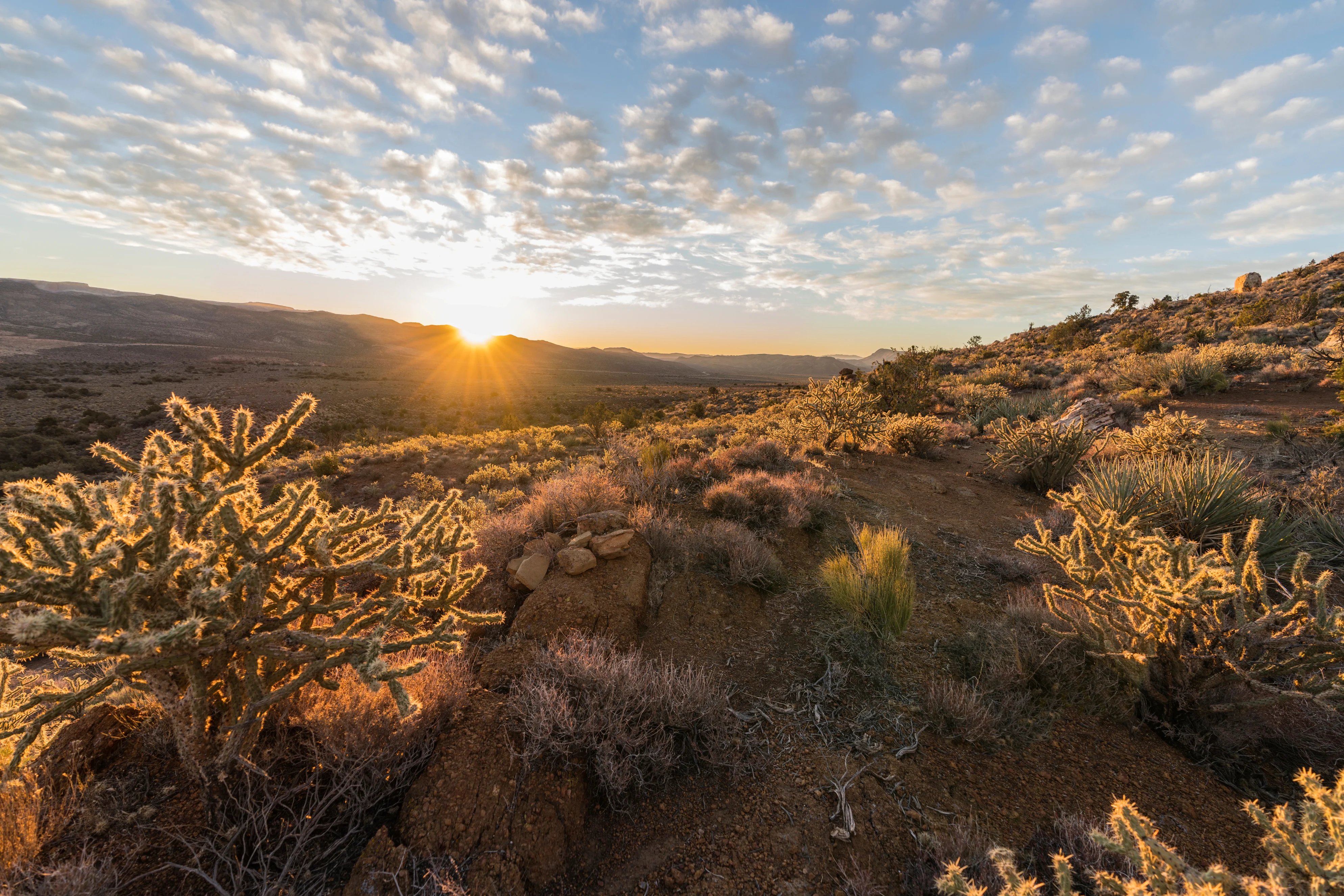Protected Areas
Free Permitting Checklist
Practical Tips to Avoid Environmental Risk on all Your Projects
Download our environmental permitting checklist to get a step-by-step list of ways to protect your project from the 9 most common environmental risks.
Download Your Checklist
What Are Protected Areas
Protected land areas are clearly defined geographical boundaries within the United States set aside to maintain, manage, and preserve for recreational purposes or biological diversity. These lands include public lands and parks, wilderness areas, national wildlife refuges, reserves, conservation easements, marine areas and more. These areas contribute to biodiversity conservation and support economies via recreational fees.
Protected areas are heavily regulated and protected by federal, state, tribal and local authorities. There are 42,826 protected areas in the U.S. as of 2022, making up 13 percent of the land area in the U.S. and covering over 477,024 square miles, according to the Protected Planet’s database. Development within protect land areas leads to an extensive review and permitting process, so awareness surrounding protected lands near a proposed project can preserve a project’s allotted timeline and budget.
According to the International Union for Conservation of Nature (IUCN), there are set classes of Protected Areas:
-
Type 1
-
Strict Nature Reserve
-
Wilderness Area
-
-
National Park
-
National Monument
-
Habitat/ Species Management Area
-
Protected Landscape/ Seascape
-
Managed Resource/ Protect Area
Biodiversity Protection
Endangered Species Critical Habitat
A critical habitat is a clearly defined geographical space essential to conserving species listed under the Endangered Species Act. Under the Endangered Species Act, the federal government is responsible for protecting endangered or threatened species, including fish, wildlife and plants and their critical habitats. Critical habitats are crucial in the effort to help and support the recovery of endangered species listed under the Endangered Species Act and support biodiversity conservation. Critical habitats can be defined as the specific area occupied by the endangered species (upon being declared endangered) that has physical or biological features essential to the conservation efforts of the species; and the area outside the geographical area of the endangered species essential for conservation, according to the U.S. Fish and Wildlife Service.
A critical habitat designation does not entirely restrict development. Declaring a critical habitat allows for federal agencies to further protect these areas. However, development involving a Federal permit, license, or funding that threatens endangered species or their critical habitat is subject to involvement from the U.S. Fish and Wildlife Service or other appropriate federal agencies. Projects are subject to modifications to minimize harm if any threats are found.
Marine Conservation Areas
Similar to endangered species and critical habitats, marine conservation areas (or marine protected areas, MPAs) refer to a park or other protected area that includes oceans, estuaries, freshwater ponds, marines or Great Lakes to mitigate human activity against harming important natural resources. MPAs ultimately help protect and restore marine life. On the other hand, a marine protected area network, or MPA network, is a connected group of MPAs that work together to meet and enhance biodiversity goals and objectives for marine ecosystems more effectively.
As the name suggests, fully protected MPAs generally allow human access but prohibit extraction, but multiple-use MPAs allow human access and activities such as fishing, diving, and boating. But keep in mind there may be specific zones within an MPA’s boundary that limit specific uses at specific times and places depending on conservation efforts and known threats.
Who Protects Ecosystems?
A variety of ecosystem services are provided at the state, local, and federal level.
Convention on Biological Diversity (CBD)
The Convention on Biological Diversity, CBD, is a multilateral treaty ratified by 196 nations. The CBD plays a significant role in sustainable development and has three main objectives, according to the United Nations:
-
Conservation of biological diversity (genetic diversity, species diversity and habitat diversity)
-
Sustainable use of biological diversity
-
The fair and equitable sharing of the benefits arising out of the utilization of genetic resources
The CBD’s governing body is known as the Conference of the Parties (COP). The 196 nations with governing authority meet every two years to discuss progress, set priorities and commit to sustainable development work plans. The governing authority entered into two internationally legally binding agreements to support implementing objectives, including the Cartagena Protocol and the Nagoya Protocol. The Cartagena Protocol regulates the movements of living modified organisms (LMOs) from one country to another. The Nagoya Protocol provides the legal framework to access and share genetic resources.
International Union for Conservation of Nature (IUCN)
The International Union for Conservation of Nature, or IUCN, helps countries develop high conservation standards and sustainable use of natural resources through field projects, advocacy, data gathering and education. The IUCN influences national and global policy surrounding conservation. They have a global network of experts who have joined the membership union to work together to develop best practices and international standards for environmental challenges and sustainable development. IUCN has projects worldwide that focus on reversing habitat loss and restoring ecosystems
World Commission on Protected Areas (WCPA)
The WCPA is a global network providing knowledge on protected areas. The WCPA supports indigenous peoples, governments, local communities, and other stakeholders in best practices for biodiversity support. This resource aims to provide the global biodiversity framework for protecting all life on earth. The connectivity between the WCPA, IUCN, and other ecologically significant organizations ensures effective ecological and world heritage protection from Asia and Canada to Africa and Montreal.

Conservation Area of Native Significance
Indigenous and Community Conserved Areas (ICCAs) are defined as “natural and/or modified ecosystems containing ecological services and cultural values, biodiversity value, voluntarily conserved by indigenous communities through local or customary laws” by A Journal of the Society for Conservation Biology.
Who Protects Native Conservation Areas?
National Park Service (NPS) Tribal Preservation Program
In 1990, the National Park Service released a report titled, Keepers of the Treasures – Protecting Historic Properties and Cultural Traditions on Indian Lands, per the United States Congress. In response, the National Park Service (NPS) Tribal Preservation Program was created to assist Indian tribes in preserving land and cultural traditions with Tribal Historic Preservation Offices and annual grant funding programs under Section 101 of the National Historic Preservation Act. The Historic Preservation Fund later created two grant programs for the Tribal Historic Preservation Offices and federally recognized tribes, Alaskan Natives and Native Hawaiian organizations.
Free Permitting Checklist
Practical Tips to Avoid Environmental Risk on all Your Projects
Download our environmental permitting checklist to get a step-by-step list of ways to protect your project from the 9 most common environmental risks.
Areas of Historical Significance
What are Areas of Historical or Archeological Significance?
Areas of historical or archeological significance help us understand the broad scope of human history. Archaeology, at its most basic definition, provides a unique explanation as to where, how, and when humans lived over the course of time. Preserving areas of historical or archeological significance helps us look at history through a different lens while simultaneously passing down our understanding of the past to the future.
Who Protects Areas of Historic Significance?
State Agencies: SHPO Reports
In 1966, the National Historic Preservation Act mandated State Historic Preservation Officers, SHPOs, as appointed positions in each of the 59 states, territories and the District of Columbia. Every state and territory today has a SHPO that focuses on the following, according to the National Conference of State Historic Preservation Officers:
- Comprehensive survey of historic properties
- Maintaining an inventory of historic properties
- Administering state programs of Federal Assistance
- Identify and nominate eligible areas of historic significance to the National Historic Register
- Assist Federal, State and local governments with historic preservation
- Develop historic preservation plans
- Work with tribal governments with matters of historic preservation matter
How Does Land Use and Land Development Impact Natural Resources?
Land use, or the human use of land, and land development can impact air and water quality, wildlife habitats, climate and much more. According to the Environmental Protection Agency, land development can create “impervious surfaces,” which lead to, but are not limited to, nonpoint source water pollution; soil erosion and flooding; and contaminated water due to increased stormwater runoff. Land use change and urban development are among the most notable socioeconomic forces behind disruptions to natural ecosystems and biodiversity.
How To Identify Protected Areas
USGS Protected Areas Database
The United States Geological Survey (USGS) Protected Areas Database (PAD-US) is the official inventory of protected areas within the United States. The USGS geospatial database is regularly updated and includes every protected area in the United States, from public land and parks to wilderness areas, National Wildlife Refuges, conservation easements, reserves and more. PAD-US is a top-notch resource for land development and research or policy analysis because it is a comprehensive database that is publicly available. You can download the data directly from USGS.
World Database on Protected Areas (WDPA)
Established in 1981, the World Database on Protected Areas (WDPA) is a global database of terrestrial and marine protected areas, with over 260,000 protected areas as of 2020. The UN Environment Programme and the International Union for Conservation of Nature (IUCN) share joint ownership of the WDPA. Still, the UN Environment Programme World Conservation Monitoring Center (UNEP-WCMC) manages the data each month in collaboration with local governments and non-governmental agencies. You can download the data directly from Protected Planet.
Environmental Consultants
Environmental consultants are environmental professionals trained to assess project sites for environmental concerns and guide land developers through the environmental permitting process. These experts can help you look for environmental risks to help mitigate any potential setback to your project. Environmental consulting is part of the environmental due diligence stage of development.
Transect
Transect's automated due diligence reports highlight potential environmental issues threatening our project. In minutes this software shows protected area coverage on or near a project site. Transect's software can help keep development timelines on track by highlighting areas of concern, including endangered species, wetlands, and required permits.
As sustainability efforts increase during the fight against climate change, it is crucial that land developers identify any protected nature reserves, sanctuaries, and protected areas on their project site.
Free Permitting Checklist
Practical Tips to Avoid Environmental Risk on all Your Projects
Download our environmental permitting checklist to get a step-by-step list of ways to protect your project from the 9 most common environmental risks.
